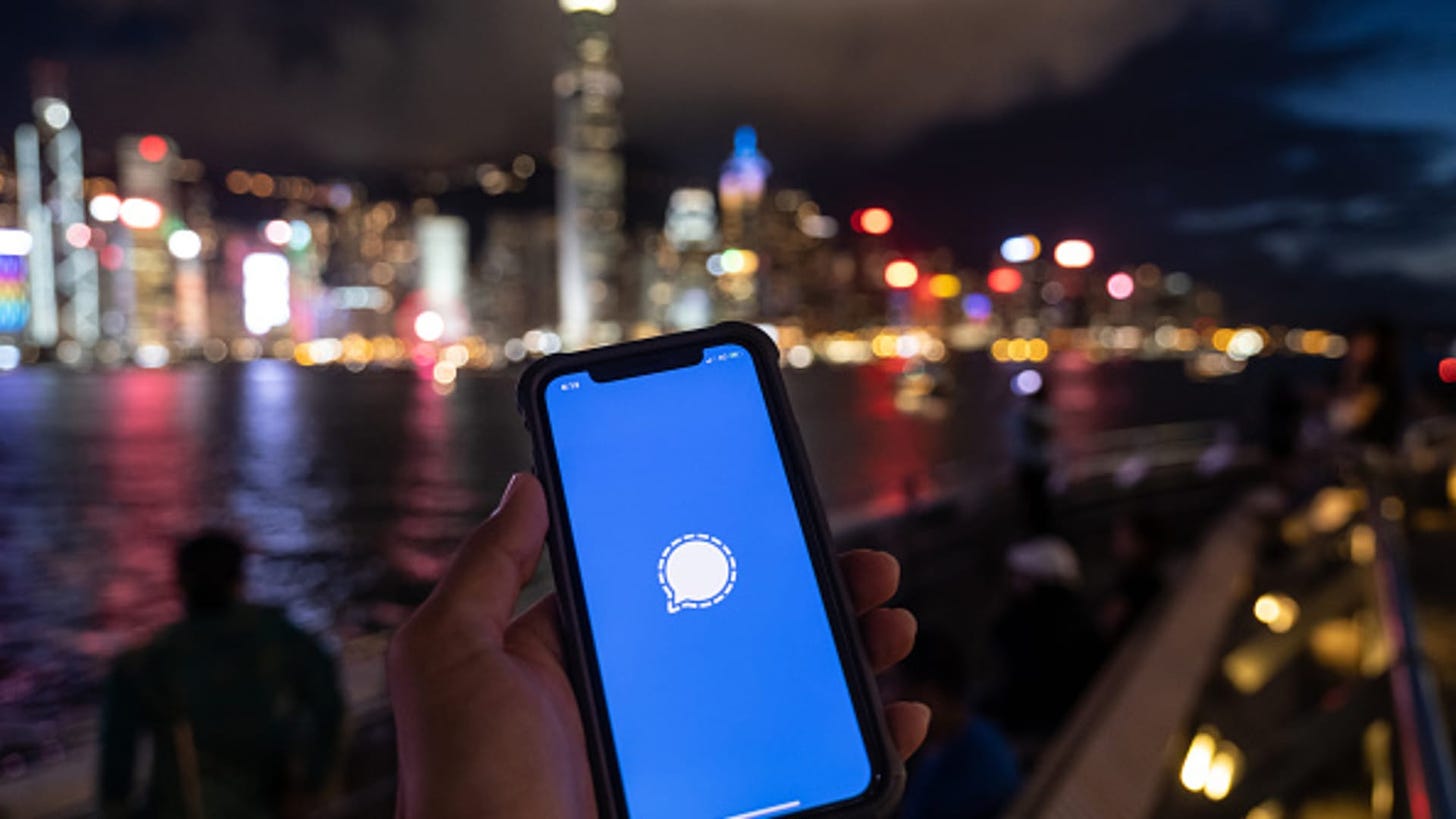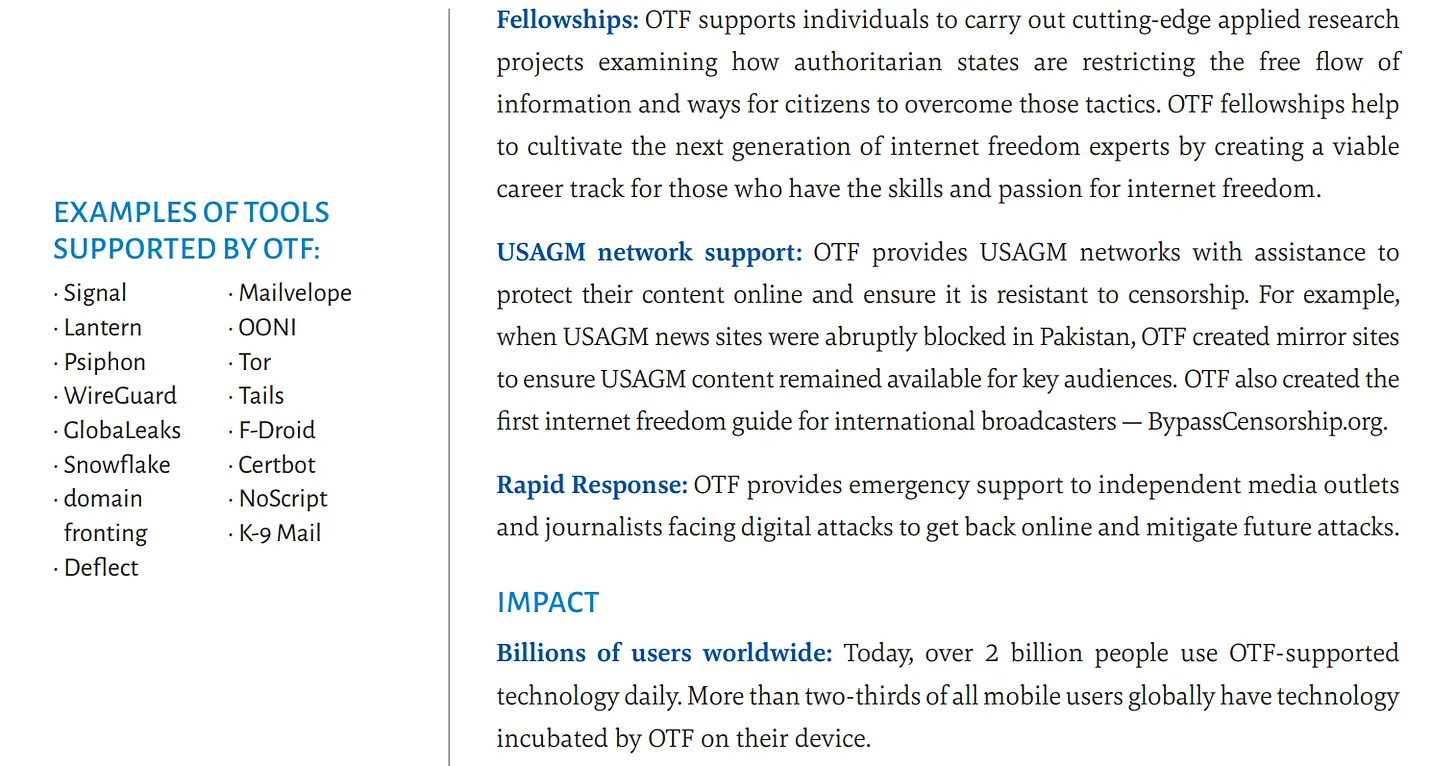Signal Facing Collapse After CIA Cuts Funding
On November 16th, Meredith Whittaker, President of Signal, published a detailed breakdown of the popular encrypted messaging app’s running costs for the very first time. The unprecedented disclosure’s motivation was simple - the platform is rapidly running out of money, and in dire need of donations to stay afloat. Unmentioned by Whittaker, this budget shortfall results in large part due to the US intelligence community, which lavishly financed Signal’s creation and maintenance over several years, severing its support for the app.
Never acknowledged in any serious way by the mainstream media, Signal’s origins as a US government asset are a matter of extensive public record, even if the scope and scale of the funding provided has until now been secret. The app, brainchild of shadowy tech guru ‘Moxie Marlinspike’ (real name Matthew Rosenfeld), was launched in 2013 by his now-defunct Open Whisper Systems (OWS). The company never published financial statements or disclosed the identities of its funders at any point during its operation.
Sums involved in developing, launching and running a messaging app used by countless people globally were nonetheless surely significant. The newly-published financial records indicate Signal’s operating costs for 2023 alone are $40 million, and projected to rise to $50 million by 2025. Rosenfeld boastedin 2018 that OWS “never [took] VC funding or sought investment” at any point, although mysteriously failed to mention millions were provided by Open Technology Fund (OTF).
OTF was launched in 2012 as a pilot program of Radio Free Asia (RFA), an asset of US Agency for Global Media (USAGM), which is funded by US Congress to the tune of over $1 billion annually. In August 2018, its then-CEO openly acknowledged the Agency’s “global priorities…reflect US national security and public diplomacy interests.”
RFA’s own origins harken back to 1948. That year, National Security Council Directive 10/2 officially authorised the then-newly created CIA to engage in operations targeted at countries behind the Iron Curtain, including propaganda, economic warfare, sabotage, subversion, and “assistance to underground resistance movements.” The station was a core component of this wider effort, along with Radio Free Europe, and Radio Liberation From Bolshevism. In 2007, a news item on the CIA’s website stated these “psychological warfare” initiatives were:
“One of the longest running and successful covert action campaigns ever mounted by the United States.”
As we shall see, much the same could be said now of Signal.
‘Taking Down Governments’
The launch of the OTF followed the US State Department, then led by Hillary Clinton, adopting a policy known as “Internet Freedom”. Ostensibly, this was an effort to develop tools to circumvent restrictions on internet access and usage overseas. A 2011 New York Times investigation concluded the endeavor was in fact concerned with“[deploying] ‘shadow’ internet and mobile phone systems dissidents can use to undermine repressive governments.”
Among the resources developed under “Internet Freedom” were State Department-funded “stealth wireless networks,” enabling anti-regime activists “to communicate outside the reach of governments in countries like Iran, Syria and Libya.” Reinforcing this analysis, in February 2015 Jillian York, director of digital rights group Electronic Frontier Foundation’s “International Freedom of Expression” division and a member of OTF’s advisory board, stated that she “fundamentally” believed “Internet Freedom” was “at heart an agenda of regime change.”
A now-deleted entry on OTF’s website amply demonstrates Signal’s conception was precisely concerned with furthering this “agenda”. It notes the app was designed to counter “restrictive internet filtering by technical methods” and “repressive surveillance or monitoring of communication.” The Fund’s subsequent investment in OWS “allowed well over a billion mobile users to benefit from end to end encryption,” and “enabled the OWS team to continue providing Signal at no cost around the globe and adapt their operations for a growing user base.”
In other words, Signal gifted the CIA “well over a billion” potential insurrectionists, by providing them with a means to organize their activities away from the prying eyes of local authorities. It is surely no coincidence Rosenfeld previously created TextSecure and RedPhone, both of which featured in a March 2013 Gizmodo guide, “Which Encryption Apps Are Strong Enough to Help You Take Down a Government?”.
Accordingly, Signal was and remains very prominently used and promoted by dissidents and protesters backed by the National Endowment for Democracy (NED), a US government agency explicitly created to do overtly what the CIA once did covertly. This was the case in Hong Kong, where Endowment funding serendipitously began flowing to opposition groups a year before Signal’s launch. In July 2020, it became the island’s most downloaded app, after the controversial National Security Law passed.
‘Existing Techniques’
Washington was for some time enormously proud of its investment in Signal. A 2019 USAGM factsheet gave the app top billing in a list of “examples of tools supported by OTF.” It further boasted that “over two billion people use OTF-supported technology daily,” and “more than two-thirds of all mobile users globally have technology incubated by OTF on their device.” Which begs the obvious question of why the Fund’s sponsorship of Signal ended.
One explanation is the app became too popular with Western citizens for the US intelligence community’s liking. In late January 2021, changes to WhatsApp’s privacy policy sent users scurrying for alternatives, and the mainstream media openly proposed Signal as a potential replacement. This was an extraordinary volte face, given the same outlets had spent immediately preceding weeks aggressively parroting fraudulent US government talking points about the dire threat of encrypted messaging, following the January 6th capitol invasion.
While media stenographers may have at least temporarily changed their tune, however, the position of Western spies remains static. With little media comment, Britain’s Online Safety Act passed in October. It compels all digital platforms, including encrypted messaging apps, to scan any content shared by their users for child pornography - a noble requirement, one might argue. Yet, it is widely opposed by major tech firms, and security and privacy experts. They argue this cannot be done without undermining user privacy, and killing encryption.
To its credit, Signal is willing to exit Britain altogether rather than abide by the Online Safety Act’s terms. That the app is quite so good at helping users “to communicate outside the reach of governments” its original intelligence community supporters have now forsaken the project entirely, is a bitter irony. However, OTF continues to fund and promote a wide variety of “Internet Freedom” tools, which allegedly fulfil that same purpose.
Among them is anonymizing, “dark web” browser Tor, frequently recommended by privacy advocates in the same breath as Signal. First developed by the US Naval Research Laboratory in the mid-1990s, it quickly caught the attention of the Pentagon’s Defense Advanced Research Projects Agency (DARPA). Since then, Tor has been almost entirely funded by US government entities. Strikingly, it features alongside Signal in the aforementioned USAGM factsheet.
Tor’s original purpose was to shield American spies from detection while deployed overseas. It was opened up to wider public use due to fears that if an enemy spy agency broke into the system, it could deanonymize users - all of whom would be CIA operatives - and monitor their statements and movements. “Democratising” Tor was intended to spread the risk of exposure, thereby insulating US intelligence and military assets.
Documents leaked by Edward Snowden reveal US and British intelligence agencies devote considerable time and resources to deanonymizing Tor users. Simultaneously though, they go to great lengths to ensure people aren’t discouraged from using the browser. One file - titled ‘Tor: Overview of Existing Techniques’ - reveals GCHQ and the NSA actively attempt to direct traffic toward servers they operate, attack other privacy software used by Tor visitors, and even undertake efforts to influence Tor’s future development.
This is understandable, given Tor - along with many other “Internet Freedom” tools championed by OTF - congregates anyone and everyone with something to hide on a single network, which is innately vulnerable to Western spying agency penetration. Surveilling user activities and monitoring their conversations is thus made all the easier. Now, recall how “two-thirds of all mobile users globally have technology incubated by OTF on their device”?
All of my Substack investigations are free to read, thanks to the generosity of my readers. Independent journalism requires investment, so if you took value from this article or any others, please consider sharing, or even becoming a paid subscriber. Your support will be gratefully received, and never forgotten.





No comments:
Post a Comment